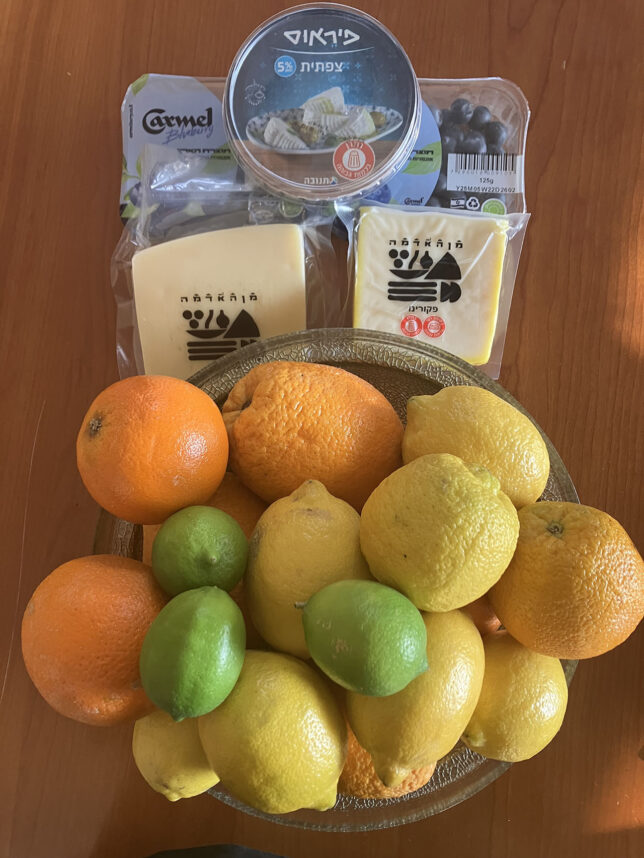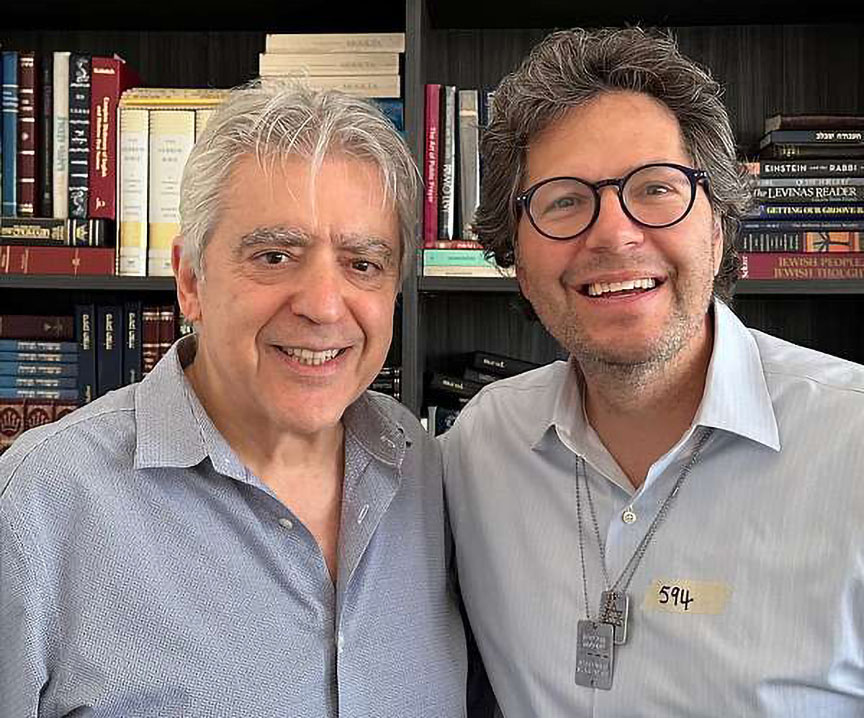
Last Sunday I tried to do my small bit to support the IDF by making a set of tzitzit. At Young Israel of Century City, about 75 of us showed up to make these religiously mandated garments, helping to fill an enormous, unprecedented need. During “normal” years, the IDF Rabbinate distributes 50,000-60,000 pairs of tzitzit. Since the Gaza war broke out, that number has quadrupled.
The Torah instructs men to wear tzitzit as a reminder of the commandments, and men who wear them are credited with fulfilling all 613 mitzvot. With their association of spiritual and physical protection, tzitzit have become known as “Jewish Kevlar” in the IDF, and one of the biggest surprises of the war has been the tens of thousands of secular Israeli soldiers who have requested them.
One such soldier recently told an interviewer that wearing tzitzit gives him a sense of appreciation and courage. “I’m not afraid of anything,” he said. “It’s the best vest we could receive, and we feel we can accomplish anything with it!”
For the IDF, the four-cornered garment (beged, in Hebrew) that houses the tzitzit fringes is fireproof and olive green. The outpouring of demand has led to 70% of the tzitzit currently distributed to soldiers having been tied by volunteers, including those who have come on support trips to Israel.
My friend Jackie Bocian and her husband, Dr. Robert Bocian, learned to tie them on a recent trip and were so inspired by stories of how tzitzit have literally saved lives that they brought back several hundred garments and sets of tzitzit strings to Los Angeles for communal tying events. On Sunday, Jackie told me about a career soldier named Guy Madar, who rushed to the massacre on October 7 in his civilian clothes with his pistol. He saved six lives by killing several terrorists before being shot and left for dead in a ditch. When Israeli soldiers arrived, they first assumed he was a terrorist and were about to kill him, but when they saw a single string of his tzitzit showing, they knew he was a brother.
I was happy to be part of this mitzvah, but also a little nervous facing my beged and strings. I thought, this is a big responsibility, transforming mundane textiles into spiritually infused protective gear! A local expert, Yoni Segura, showed us how to make the knots and count the windings on each set of strings: first a double knot, then seven windings. Another double knot, then eight windings, another double knot, then eleven windings, and finally, another double knot, then thirteen windings, and a final double knot.
I was happy to be part of this mitzvah, but also a little nervous facing my beged and strings. I thought, this is a big responsibility, transforming mundane textiles into spiritually infused protective gear!
I was pleased that I was sitting with my friends Lisa and Scott, because Scott was very experienced at this, while Lisa and I looked at each other with raised eyebrows, agreeing that this might be harder than it looked. After a half hour, I had only managed to get halfway through one set of strings, and showed my uneven handiwork to Scott.
“Too loose,” he said. “The guy could be in a tank and those tzitzit might come undone.” Oy! I unraveled and untied everything I had done and started again, reminded of why I had never taken up knitting, crocheting, or any other craft. Lisa had gotten the hang of it and was winding and tying like a pro, but she joked with me sympathetically, “This is knot so easy!” We laughed until we remembered that this was serious spiritual business and we weren’t supposed to talk during our work. With deep intention, I recited the phrase, “L’shem mitzvat tzitzit”—For the commandment of tzitzit, as I was supposed to do as I began each new corner.
By the time I got my tzitzit tying groove, the room had mostly emptied out, everyone turning in their completed tzitzit. Scott and Lisa had already left, Scott having done three and Lisa, two. I imagined that if I didn’t finish soon, a maintenance guy would come in soon to turn the chairs upside down on the tables, like a bar closing down.
I picture some sweet, young soldier heading into danger, wearing the tzitzit I made. May they protect him from all harm.
Judy Gruen is the author of “Bylines and Blessings,” “The Skeptic and the Rabbi,” and several other books. She is also a book editor and writing coach.
























 More news and opinions than at a Shabbat dinner, right in your inbox.
More news and opinions than at a Shabbat dinner, right in your inbox.